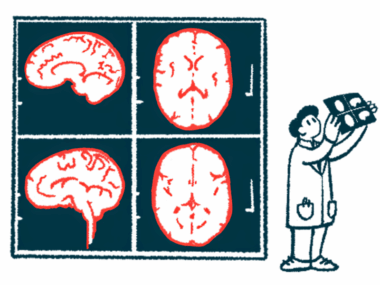#ACTRIMS2022 – Immune System ‘Reset’ by Stem Cell Transplant
Written by |

Undergoing a stem cell transplant, a procedure that aims to “reset” a person’s immune system, can reduce relapse rates and ease disability in people with multiple sclerosis (MS), new data show.
The findings suggest that such a transplant — fully, autologous hematopoietic stem cell transplantation or aHSCT — is most effective in patients with milder disability at the time of the procedure.
Francis Brunet, MD, a neurologist and MS fellow at the University of Ottawa, presented the research at the Americas Committee for Treatment and Research in Multiple Sclerosis (ACTRIMS) Forum 2022, in the talk, “Autologous Hematopoietic Stem Cell Transplantation in patients with Multiple Sclerosis: Long term follow up of the Ottawa cohort.”
In MS, the immune system accidentally launches an inflammatory attack against the brain and spinal cord. The objective of aHSCT “is really to ‘reset’ the immune system, to destroy the inflammatory activity” that drives MS, Brunet said.
The procedure starts with the collection of a person’s hematopoietic stem cells, which are cells that live in the bone marrow and are able to grow and differentiate into various kinds of blood cells. The patient is then given aggressive chemotherapy treatment to effectively “wipe out” his or her immune system. Finally, the collected stem cells are infused back into the patient, so they can repopulate the immune system once they migrate to the bone marrow — in theory, giving rise to cells that are less likely to cause MS-driving inflammation.
At the University of Ottawa, in Canada, aHSCT has been used to treat MS patients with aggressive disease since the early 2000s. The aim of the present study was to assess the long-term safety and efficacy of receiving a stem cell transplant through a retrospective analysis of medical records.
A total of 71 MS patients who had undergone aHSCT were included in the analysis. Their average age at transplant was 32.5 years, and the average time from diagnosis to aHSCT was 5.6 years. Slightly more than half of the patients were female, and nearly all had been treated with one or more disease-modifying therapy for MS.
The analysis included patients who had undergone aHSCT over the last two decades, though Brunet noted that, since the procedure has become more common over time, most of the data was comparatively recent.
Most of the patients had relapsing-remitting disease (RRMS), and a few had secondary progressive MS (SPMS). Over time, the proportion of RRMS patients undergoing a stem cell transplant has increased, while the number of SPMS patients receiving the procedure has decreased. According to Brunet, the reason is that better outcomes generally are observed early on in disease, before a lot of inflammatory damage has already been inflicted in the brain.
Results of the analysis showed that aHSCT significantly reduced the rate of MS relapses: prior to aHSCT, the average annualized relapse rate was 1.39 relapses per year. After the procedure, the average relapse rate was zero.
“We didn’t see any patient who had a new relapse after the transplant. That is really significant, in terms of efficacy,” Brunet said.
Additionally, prior to aHSCT, patients were in general experiencing worsening disability over time, as evidenced by an increase in scores on the expanded disability status scale (EDSS). After aHSCT, the rate of change in EDSS was slightly negative — indicating that, for most patients, disability remained stable or even improved slightly after transplant.
A more detailed analysis indicated that disability outcomes generally were better among those with less severe disability at the time of aHSCT: among patients with a starting EDSS score of four or lower, 62% experienced an overall reduction in their EDSS scores, indicating less disability. Similar improvement was seen in 36% of patients with a starting EDSS score higher than four. Brunet noted that, generally, improvements in EDSS were relatively mild.
A stem cell transplant also led to a significant reduction in the number of new brain lesions visible via MRI scans, though Brunet noted that MRI data was available only for about half of patients.
Overall, these data suggest that aHSCT can lower inflammation, reduce relapses, and ease disability in MS. A “key point” of the study, according to Brunet, is that the procedure tends to be more effective in patients with relatively early disease and mild starting disability.
Brunet highlighted the importance of selecting the patients most likely to benefit from the procedure. “The key is really to try to identify which patient will be the best candidate” for aHSCT, he said.
Over the course of the study, three patients died — one from sepsis and liver disease, one from pneumonia, and one from unspecified sudden death. This mortality rate is generally similar to what has been seen in other aHSCT studies, Brunet said. The researchers did not assess long-term side effects, a noted limitation of the study.
Editor’s note: The Multiple Sclerosis News Today team is providing in-depth coverage of the ACTRIMS Forum 2022 Feb. 24–26. Go here to see the latest stories from the conference.





